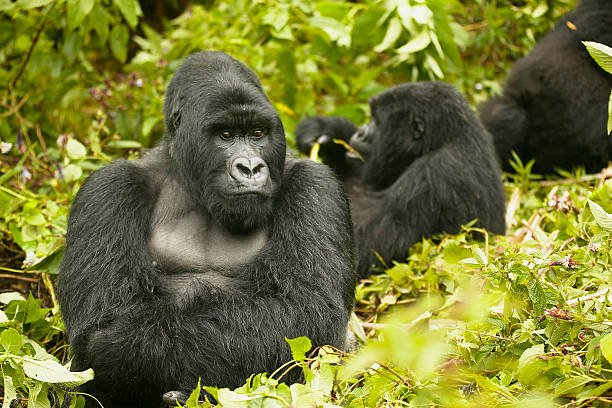
Self-Medicating Gorillas May Hold New Drug Clues
Scientists believe that wild gorillas' ability to self-medicate could unlock new avenues for drug discovery. Researchers studying gorillas in Gabon have identified four tropical plants that the apes consume, which also feature in local traditional medicine. These plants have shown promising medicinal properties. Through lab studies, the plants were found to be rich in antioxidants and antimicrobials, with one plant exhibiting potential for combatting superbugs. Great apes, such as gorillas and orangutans, are known for their instinctual ability to self-medicate, often selecting plants with healing properties. In fact, a wounded orangutan recently gained attention for using plant paste to treat an injury. In this study, scientists focused on plants eaten by western lowland gorillas in Gabon's Moukalaba-Doudou National Park. Based on input from local healers, they identified four key species: the fromager tree (Ceiba pentandra), giant yellow mulberry (Myrianthus arboreus), African teak (Milicia excelsa), and fig trees (Ficus). These plants have long been used in traditional medicine to treat ailments ranging from digestive issues to infertility.
The bark of these trees contains a variety of medicinal compounds, including phenols and flavonoids. Each plant demonstrated antibacterial effects against at least one multidrug-resistant strain of E. coli, with the fromager tree showing particularly strong activity against all tested strains. "This suggests that gorillas have evolved to eat plants that provide health benefits, highlighting the large gaps in our understanding of Central African rainforests," said Dr. Joanna Setchell, an anthropologist from the University of Durham, UK, who collaborated with Gabonese scientists on the study. Gabon's vast, unexplored forests are home to a variety of species, including forest elephants, chimpanzees, and gorillas, as well as countless plant species still unknown to science.
Sadly, western lowland gorillas are critically endangered due to poaching and disease. The findings of this research, which could inform future drug development, were published in the journal PLOS ONE. ⚡ Image Credit: GettyImages
Advertisment

Australia strips officers` medals for war crimes c...
Sep. 14th, 2024Australia has revoked the military honours of several senior defence commanders in connection with a...

FG Seizes N83bn Protest Funds, Arrests Political C...
Aug. 14th, 2024The Federal Government has successfully blocked and seized at least N83 billion in cryptocurrency an...

Olubadan Calls on Belgian Government to Invest in ...
Aug. 26th, 2024The Olubadan of Ibadanland, Oba Owolabi Olakulehin, has extended an invitation to the Belgian govern...

Nigerian Soldier Dismissed After Alleging Rape Cri...
Sep. 26th, 2024A Nigerian soldier, Ruth Ogunleye, who was dismissed from the military after making serious allegati...

Manchester City Faces Uncertain Future as Key Midf...
Sep. 24th, 2024Manchester City midfielder Rodri is facing a potentially lengthy spell on the sidelines after suffer...